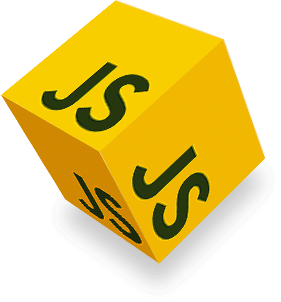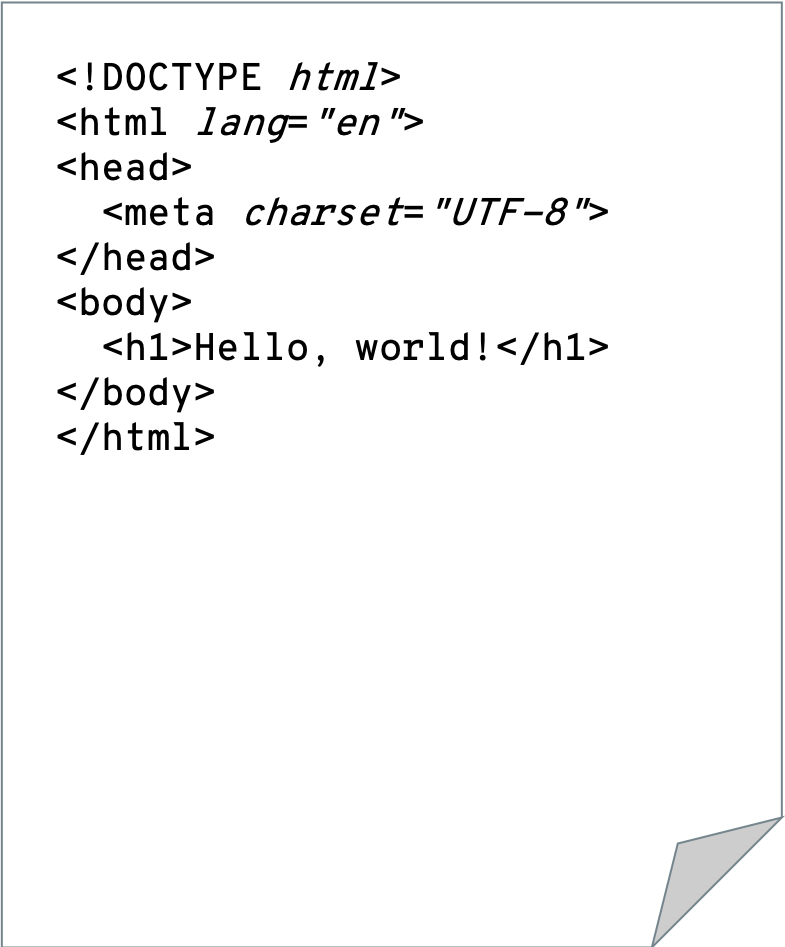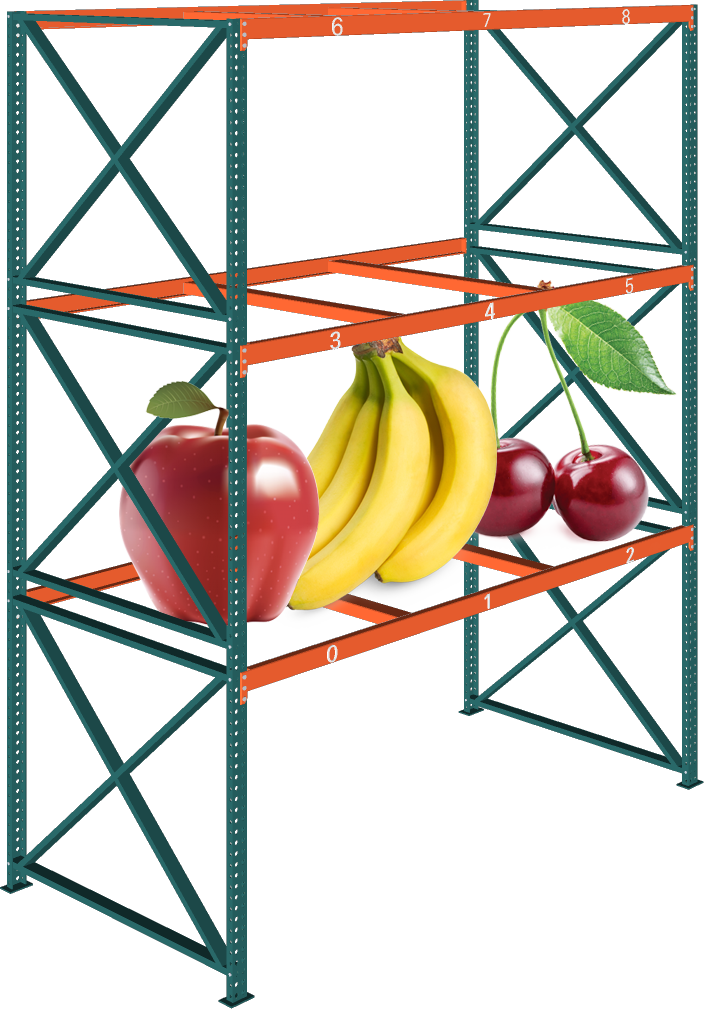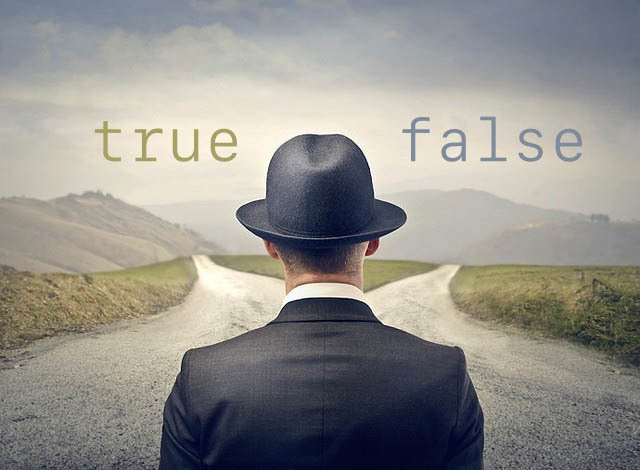Client side programming
Lecture #2


This weeks Read: Chapter 1
minus loops
html
Code is just text in a plain text file.
Just Like HTML and CSS

c


c#

javascript

java
≠

javascript

Jay-Ess
for short
JavaScript versions
ECMAScript is the standard upon which JavaScript is based, and it’s often abbreviated to ES.
- For compatibility reasons many still stick to ES5
- ES6 was a big update in 2015.
A lot of the new stuff are at a more advanced level though. - The latest stable version today is ES9
Let's have a look at the code
<!DOCTYPE html>
<html>
<head>
<link rel="stylesheet" href="first-look.css">
</head>
<body>
<h1>Welcome to my dynamic website</h1>
<button>Switch to Dark mode</button>
</body>
</html>var mode = "dark";
var buttonLabel = "Switch to Bright mode";
var linkTag = document.querySelector("link");
if (mode == "dark") {
linkTag.href = "first-look-bright.css";
mode = "bright";
buttonLabel = "Switch to Dark mode";
}
document.querySelector("button").innerHTML = buttonLabel;
Can you figure out what is going on?
<!DOCTYPE html>
<html lang="en">
<head>
<meta charset="UTF-8">
<link rel="stylesheet" href="first-look.css">
<title>A first look at JavaScript</title>
</head>
<body>
<h1>Welcome to my dynamic website</h1>
<button>Switch to Dark mode</button>
<script>
var darkMode = false;
var buttonLabel = "Switch to Bright mode";
var linkTag = document.querySelector("link");
function switchModes() {
if (darkMode) {
// if we got here, the page was Dark when the user clicked. Let's wwitch to bright mode.
linkTag.href = "first-look.css";
darkMode = false;
buttonLabel = "Switch to Dark mode";
} else {
// the variable darkMode was false when the button was clicked, so lets toggle the mode to dark.
linkTag.href = "first-look-dark.css";
darkMode = true;
buttonLabel = "Switch to Bright mode";
}
document.querySelector("button").innerHTML = buttonLabel;
}
document.querySelector("button").onclick = switchModes;
</script>
</body>
</html>Basic terminology
statements
-Changes something
-Ends with semicolon ; (usually)
// the variable buttonLabel is changed
buttonLabel = "Switch to Bright mode";
// the HTML is changed
document.querySelector("button").innerHTML = buttonLabel;expressions
-Are values
or something that
-Resolve to values
// This is a literal string expression
buttonLabel = "Switch to Bright mode";
// This is a variable expression
btn.innerHTML = buttonLabel! important
remember !
Expressions are always resolved
to a single value

Don't worry,
We'll get back to that soon
Let's try it out a little
- Open Chrome
- Open the web inspector
- Switch to the Console tab
- Type the following (not the comments):
var msg = prompt()
// Press Return to run the script.
// Type something in the box and click OK,
// then type the following:
console.log(msg)
//Explain to your neighbour what just happenedThe Console
Next to the browsers web inspector
Mac: CMD + J
Win: Ctrl+ Shift + J

<!DOCTYPE html>
<html lang="en">
<head>
<title>Document</title>
</head>
<body>
<h1>Hello, world!</h1>
<script>
alert("Hey JavaScript!");
</script>
</body>
</html>Where to put the code
Alternative 1: write code in the HTML-document
Position of the script tag
<!DOCTYPE html>
<html lang="en">
<head>
<title>Document</title>
</head>
<body>
<h1>Hello, world!</h1>
<script src="lab2_kojo.js"></script>
</body>
</html>var msg1 = "Put the script tag ";
var msg2 = "just before </body>"
alert(msg1 + msg2);
lab2_kojo.js
Where to put the code
Alternative2: import an external file
<!DOCTYPE html>
<html lang="en">
<head>
<title>Document</title>
<script src="lab2_kojo.js" defer></script>
</head>
<body>
<h1>Hello, world!</h1>
</body>
</html>Where to put the code
Alternative placement: in the header
! IMPORTANT
The defer attribute puts the script on hold until all HTML has loaded. This is important when we later on manipulate the HTML.
Variables
Named memory slots

var ≈ name a memory cell
var height; In programming terms:
Declare the variable height
What is actually happening:
Reserve space in RAM for a future value and refer to it as height
Save a value to a variable
height = 187;

In programming terms:
Assign the value 187 to the variable height
What is actually happening:
Write 187 to the Memory at the position referred to as height
Declare and assign
var height = 187;
This is a shorthand.
It first declares the variable height
Then assigns the value 187 to it.
Declaring variables
ES6 style
You need to learn some more to fully understand the difference from var.
const variables are constant. They cannot be changed later on.
Use them if you want to, but understand that they are block scoped.
let year = 2019
const planet = "earth"Variables

I will remember this as flower
"Chrysanthemum"
var flower = "Chrysathemum";variable name
JS keyword:
-Define new variable
A value

Variables
work like placeholders or shortcuts to values
alert(flower);
naming Variables
RESTRICTIONS
break case catch
class const continue
debugger default delete
do else export
extends finally for
function if import
in instanceof new
return super switch
this throw try
typeof var void
while with yieldJavaScript keywords
-do not use
naming Variables
RESTRICTIONS
animal = "cat";
zip = 90210;
_underscore = true;
$dollar = 500;
or _
or $
The first letter must be:
a-z
subsequent characters can also be numbers
var _ÅÄÖüñ_ = "Happy"These are not allowed
// start with a number
var 4ever = Infinity;
// no spaces in variable names
var my number = 42;
// no dashes (minus)
var zip-code = 90210Avoid these characters
e1337 = 1337;
style CONVENTIONS
how most people style their JavaScript variables
start with a lowercase letter
var running = false;
var games = 0;camelCase not dashes
var myTextVar = "my text var";
var currentGuess = 0;
var playerScore = 0;
More conventions here:
values & types
A value can be of a certain type
values & types
In real life you could see these values.
What types are they?




99:-
values & types
In JavaScript you could see these values.
What types are they?
104
"Hello World"
false
[1,2,3,4]
true
{age:4, height: 99}
types in JavaScript

3.14159
1337
42"anything within double quotes"
'or single quotes'
"42" // even this is a string// either
true
// or..
false(primitive)
weird Primitive types
Two "nothing"-types
var nothing = null;null
undefined
var nothingYet; // undefinedThe value is null,
and the type is null
The value is undefined,
and the type is undefined

complex types

Arrays (subtype of object)
Objects

Functions

var car = {brand:"Chevy", color:"red"};var fruits = ["apple", "banana", "cherry"];function varName() {
console.log("Hello");
alert("world!")
}Numbers
think math
- can be integers like 1 or 2 or 42
- can be floats (decimal) like 3.14156
It's a dot .
not a comma ,
Mathematical operators
arithmetic operators, to be nerdy
40 + 2 // 42 44 - 2 // 42 21 * 2 // 42 84 / 2 // 42
Arithmetic expressions
Some Math functions
var pie = Math.PI // 3.1415926
var roundPie = Math.round(pie) // 3
var hiPie = Math.ceil(pie) // 4
var lowPie = Math.floor(pie) // 3
Three ways to round a number
Strings
think text
- If you put quotation around a value
you got yourself a string. - Pay attention when copying: Quotations from word might have typographical marks like ”Invalid” or ’error’. Must be straight ' "
- A string could be as small as "a" or an entire book
- It's just a string of characters.
"55" or "👍" or "{a:42}" or "deoxyribonucleic acid" or even " "
Concatenate strings
(That means join)
var firstName = "John "
var lastName = "Doe"
var fullName = firstName + lastName
console.log(fullName) // "John Doe"use + between strings to join them
String surprise #1
var age = "20"
console.log(age + 1)What's the result?
Why do you think?
Try different numbers
What do you get when you combine a string with a number?
A strumber ...not
You get a string!
"4" + 2 is "42"
"U" + 2 is "U2"
String surprise #2
var age = 20
console.log("Next year you will be " + age + 1)Why are we still not getting the expected results?
Convert strings
If a string contains only numbers
it can be converted to the type number
var age = "20"
age = Number(age)
console.log(age + 1) // 21Count the characters
var flower = "Chrysanthemum"
var letters = flower.length
console.log(letters)
add .length right after the variable name
Booleans
true or false
Boolean
as a result of a comparison
42 == "Answer to everything"== is a comparison* operator
This expression claims that 42 is equal to "Answer to everything"
The resolved value of this expression is
the boolean value false
* Actually the term is relational operator
Boolean expressions
Using different comparison operators
console.log( "cat" == "cat" ) // true
console.log( 5 < 10 ) // true
console.log( Math.PI > 4 ) // falsevar myAge = 16
var oldEnough = myAge >= 18
console.log(oldEnough) // falseThe not! operator
the opposite

var theTruth = false != false // false
theTruth = !theTruth // trueOperators

COMMUNICATING
Using the browser's built in dialog windows

alert("This is an alert!")


prompt("What's your name")
returns the value as a string
confirm("Do you want to continue?")
returns true or false
Line breaks in alert
alert("Good morning! \nToday is the first day\nof the rest of your life")

This also works for confirm() and prompt() of course
COMMUNICATING
Using the browser's built in developer console

var msg = "log your variables to console.log() to see their value here";
console.log(msg);
console.error("If your game isn't working you can see why in the console");
COMMUNICATING
By writing directly to the HTML
<body>
<h1>Welcome!</h1>
<script>
document.write('<p>To this dynamic web page</p>');
</script>
</body><body>
<h1>Welcome!</h1>
<p>To this dynamic web page</p>
</body>write on the HTML page where the script tag is
using document.write(htmlCode)
COMMUNICATING
By manipulating the HTML
var myHtmlRef = document.querySelector('h1');
myHtmlRef.innerHTML = 'Hello, <b>world!</b>';<body>
<h1> <- Everything between these are innerHTML -> </h1>
</body><body>
<h1>Hello, <b>world!</b></h1>
</body>but more on this later
Conditional statements

if (destination == "Råslätt") {
"Take the left path"
} else {
"Take the right path"
}The if statement
if (true == true) {
/* Code in this block
* Will only run if
* the test is true. */
}
A test (boolean expression)
What is the value of points?
after the script has run
var points = 0
var skill = 3
if (skill > 3) {
points = points + 1
}
console.log("Your current score is " + points)The else statement
Can only follow an if-statement
var points = 0
var extra = confirm('want a point?')
if ( extra ) {
points = points + 1 // only if extra is true
} else {
points = points - 1 // only if extra is false
}
Otherwise
The else if statement
Can only follow an if-statement
if ( extra ) {
points = points + 1 // only if extra is true
} else if (points == 0){
alert ("Can't get any lower")
/* only if extra is false
* and points is 0 */
} else {
points = points -1
}OK, well, what about...
Otherwise
Till next time
-
read about loops in Chapter 1
-
read Chapter 2
